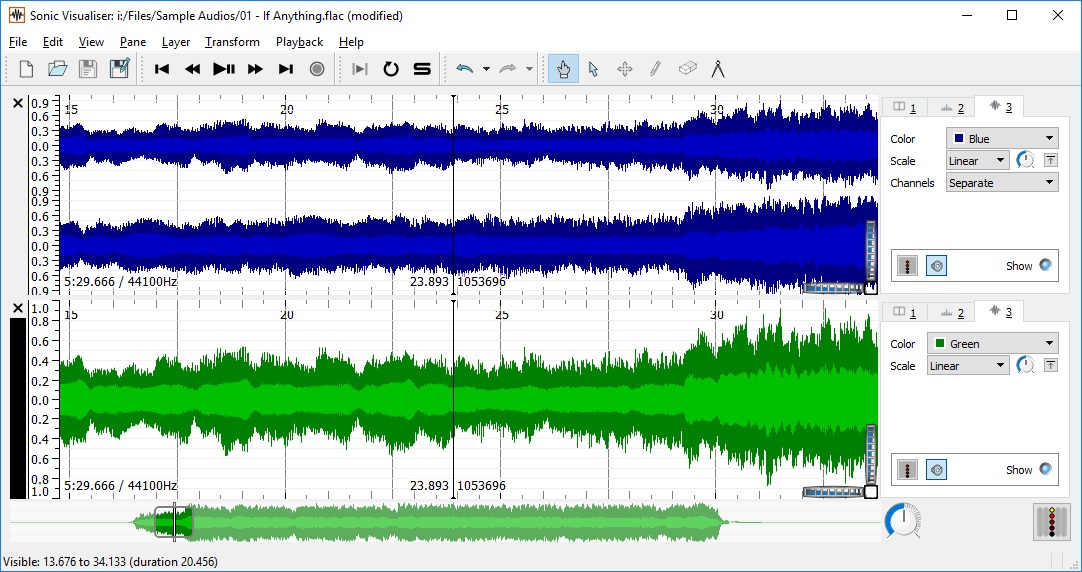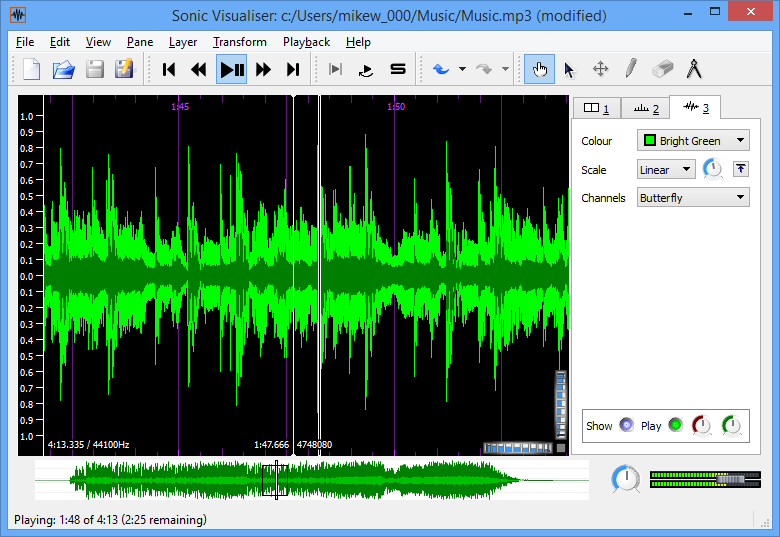

Once the words are recorded, students can see the audio display of their recording. This gives them ample opportunity to practice recording audio, as it will take several takes to get the words right. It is at this point that students realize that although audio can be recorded into SV, the recorded audio cannot be edited. The first step is to record the words, followed by each word’s main vowel sound, into SV. The students are given a list of words containing either closed, middle-opened, or opened vowel sounds (e.g., “heat,” “said,” and “father,” respectively). Figure 3 demonstrates what an outcome of the exercise might look like. Programs like Apple Music and Spotify make use of MIR to recommend music to listeners on the basis of their previous listening patterns, and popular apps like Shazam use MIR to identify songs playing close to the user’s phone.Ī first exercise for students to complete in class introduces the concept of vowel formants and lets them practice recording their own voices into SV. MIR is interested in cataloging musical features on a grand scale and building recommendation systems. However, many of these features do have perceptual analogues-centroid is commonly associated with a sound’s brightness. Unlike tempo, spectral features require computational methods in order to be calculated. One spectral feature, for example, is centroid, which indicates the frequency at which a spectrum’s energy is centered. Examples of nonperceivable features might be those characteristics that describe music’s frequency spectrum. However, if one wished to analyze how the choice of tempo varies across hundreds of recordings of the piece, one could program a computer to construct tempo curves for each recording, and then calculate descriptive statistics (e.g., mean, standard deviation) to form an idea of the most likely approach to the piece. An example of a perceivable dimension would be observing the time onsets of notes to determine how a performer executes a tempo rubato section in Chopin’s Nocturne op. 7 Such features can include perceivable and nonperceivable dimensions of music. This wide-ranging field focuses on the computational analysis of music and sound, including the design of algorithms for extracting meaningful features from audio signals, and then indexing those features for search and retrieval schemes. The research field most often affiliated with SV is Music Information Research/Retrieval (MIR).

As far as the nontechnical user is concerned, these parameters function as image modifiers, and allow the user to edit the spectrogram’s sharpness or smoothness. In any case, a deep understanding of fast Fourier transform is not required for the use of SV. These properties might be confusing for nontechnical users but are adequately explained in the documentation.
SONIC VISUALISER NOT LAUNCHING SERIES
The spectrogram is calculated by segmenting the audio file into windows and performing a series of fast Fourier transforms to obtain the frequency components present in the audio stream, and the overlap refers to the number of overlapped samples between windows. The editable properties include color schemes for all types of layers, and for spectrogram layers users can change window and overlap sizes. The user navigates the layers by clicking on labeled tabs at the top of the Display Properties box. 6 The unique extended documentation gives the SV user much more than an overview of features-it provides an entire theoretical framework from which to draw research questions and methods.Įach layer type has its set of display properties, which can be altered in the panel that shows up on the right side of the window when a new layer is created.
SONIC VISUALISER NOT LAUNCHING FREE
4 The tutorial “A Musicologist’s Guide to Sonic Visualiser” is particularly instructive for new users, 5 as is Leech-Wilkinson’s free online book The Changing Sound of Music. The material is extensive, especially if one begins to explore the resources listed on the documentation page, which leads to the CHARM website.

The SV website provides excellent background information, videos, tutorials, and links to past and current projects. SV is a tool for exploring sound, and for extracting and analyzing music’s multidimensional features. This is a fact that often disappoints and confuses new users. In fact, once you record something it is impossible to edit the audio. Recording is possible, although this is not SV’s primary purpose. So, what is SV exactly? It is many things, but perhaps most of all, it is not a DAW (digital audio workstation), at least not in the traditional sense.


 0 kommentar(er)
0 kommentar(er)
